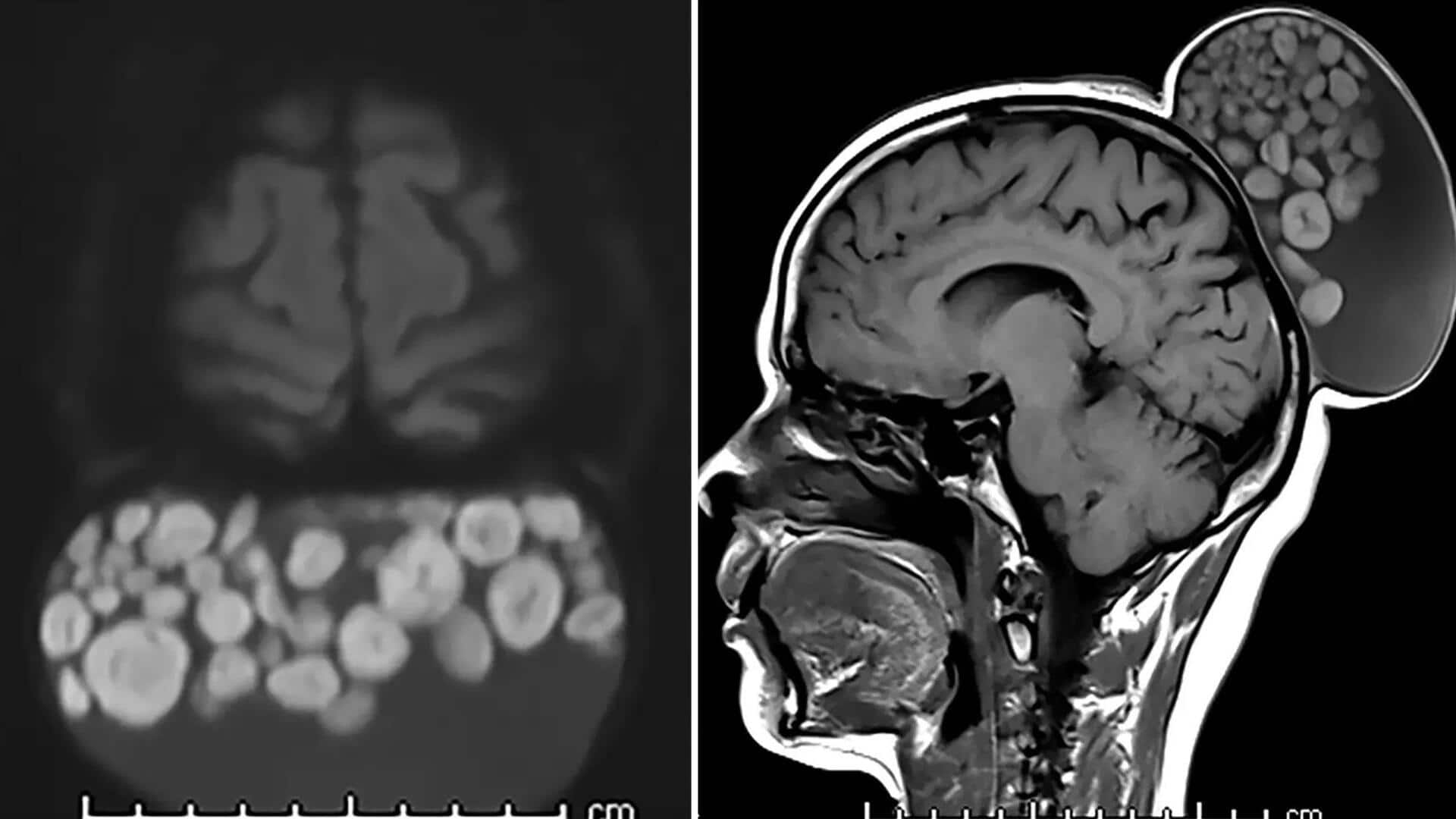
Bengaluru: 'Sack of marbles' growing on a woman's scalp removed
What's the story
In an unusual surgery, doctors in Bengaluru removed a bulging growth from a woman's head that resembled a "sack of marbles." This "uncommon" condition was detailed recently by the Sri Sathya Sai Institute of Higher Medical Sciences in Radiology. The 52-year-old woman has been living with the protuberance on her scalp since childhood. But she had never sought medical attention before.
Growth
The swelling grew up to 6 inches long
According to the doctors, the painless swelling had grown to nearly six inches long, four inches wide, and five inches tall. An MRI scan revealed that the growth resembled a fleshy hair bun on the back of her head. The surgeons discovered the growth to be filled with fluid, hair, fatty molecules, and balls of keratin with thick outside rims that varied in size.
Medical explanation
What exactly are these balls?
The medical term for these globules is dermoid cysts. They are essentially tissue spheres that form from embryonic cells and may contain "hair, teeth, or nerves." These globules can appear anywhere on the body, including one's ovaries and various areas of the head and neck. Dermoid cysts are often harmless, but they don't resolve on their own and need to be removed surgically.
Cause
The cause is unclear
Although the cause of these congenital orbs sprouting is yet unknown, experts claim that they are typically painless and harmless. The gumballs, however, might result in consequences like infections and injury to adjacent bones. But in this case, doctors shared that it was "painless." It is unclear why the woman waited for this long to seek medical attention.
Observed for 6 months
The woman was observed for 6 months post surgery
Patients are usually advised to seek medical treatment immediately if the globule causes pain, grows, changes color, or ruptures. In the Bengaluru woman's case, the doctors removed the growth successfully and kept tabs on her recovery for six months. Post the analysis, the doctors concluded that there was "no recurrence" of the growth on her body.